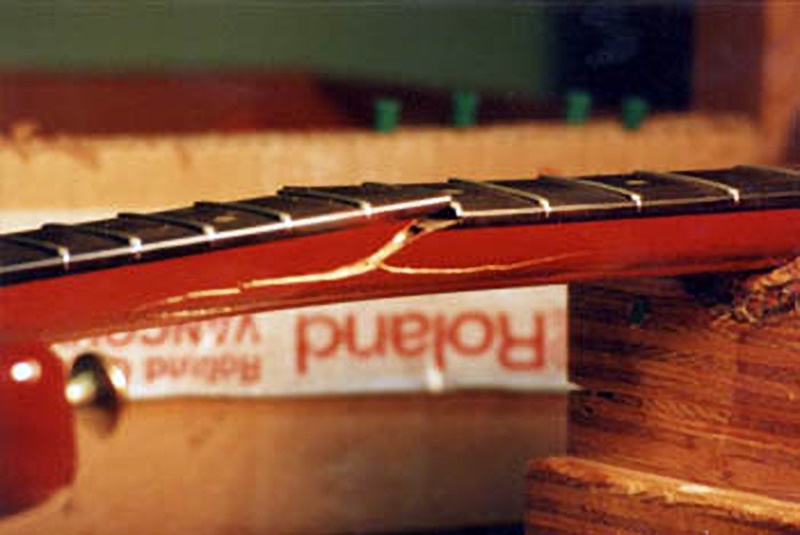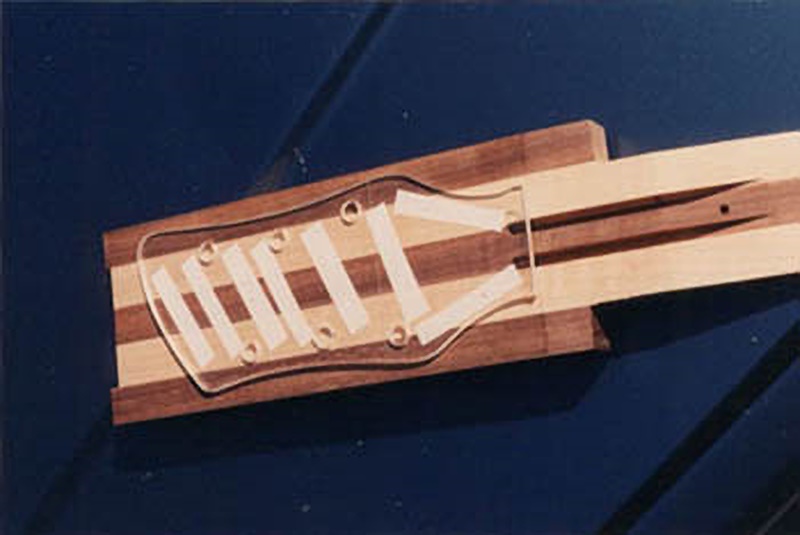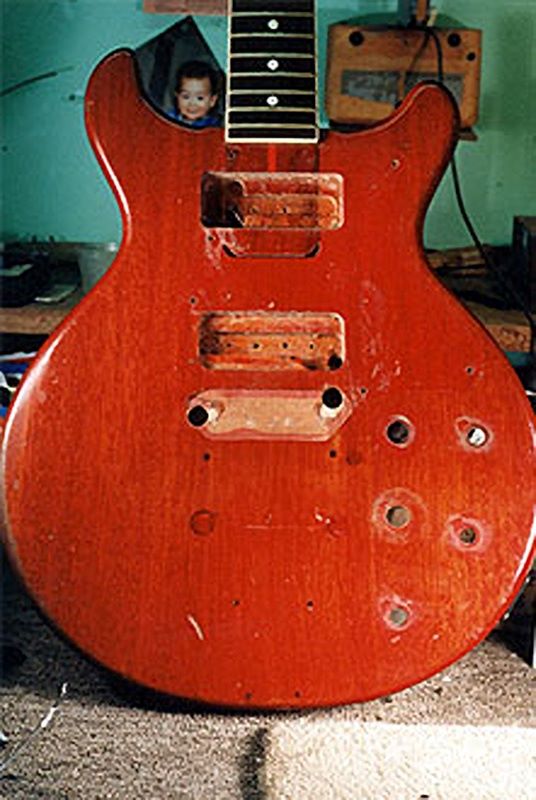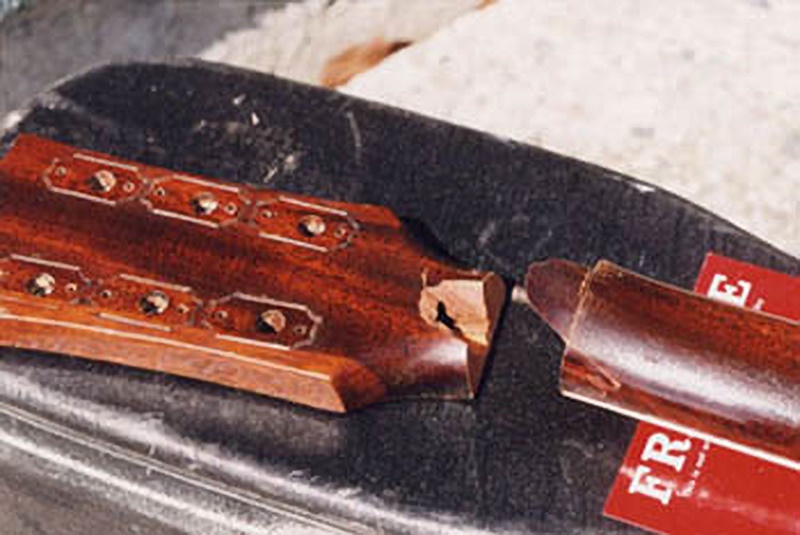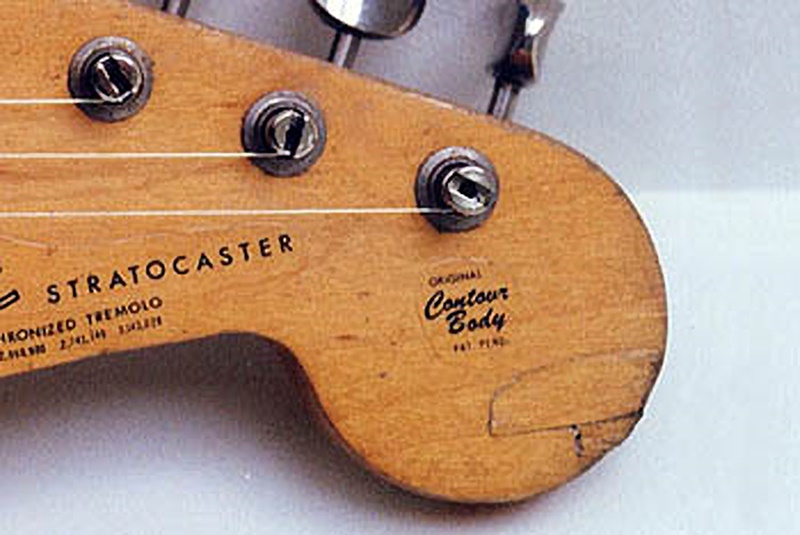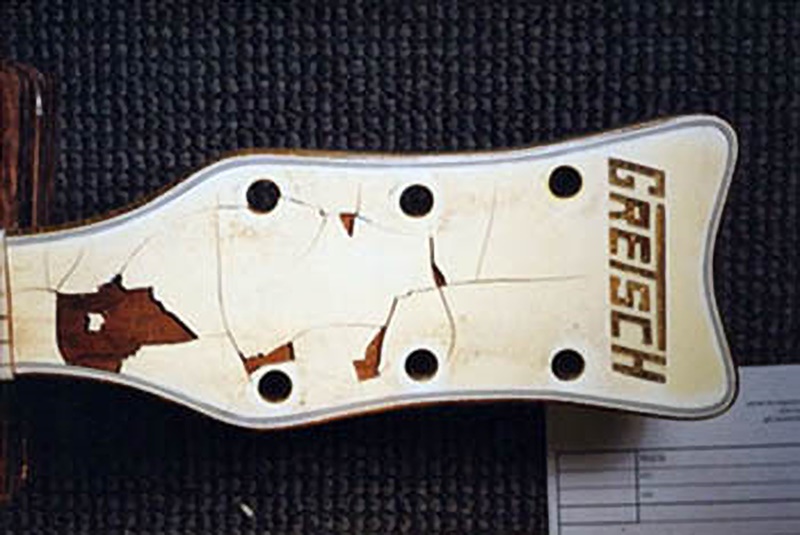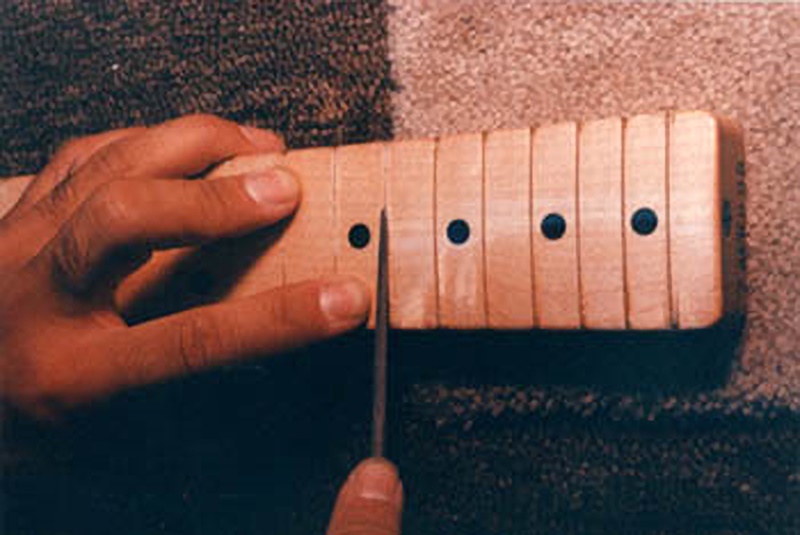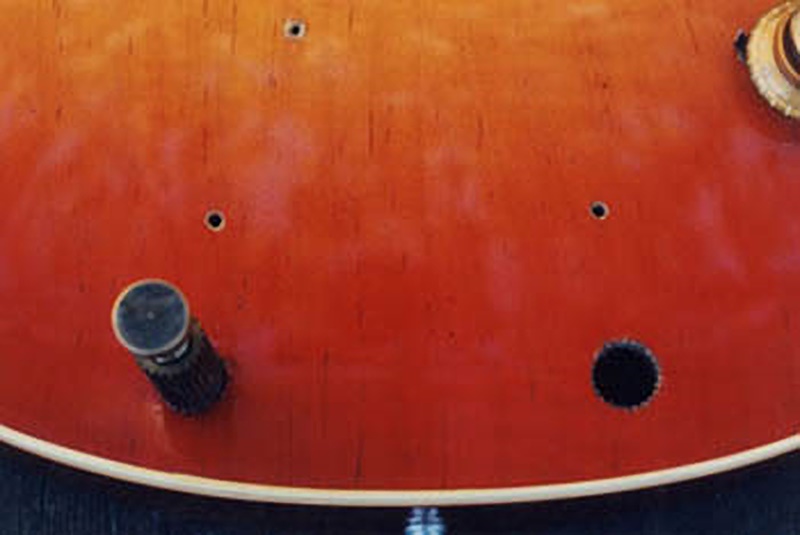Using brass parts was a 1970s fashion. Usually, a neck break occurs where the neck meets the head. This type of neck break, pictured here, is very rare. The mahogany...
Any repair must be done properly the first time, otherwise, it could cost you more in the end than you expect. Besides, a repair will be much more difficult if...
This repair involved the creation of a completely new five-piece headstock. This broken five-piece guitar neck had been repaired previously with fiberglass, which was a very popular technique in the...
Over its long life, this guitar had various screw holes made on top to install different bridges and tail pieces to improve the intonation and playability. Also, for better lower...
Some vintage guitar pickguards attract bids over $3,000. That may seem insane, but, as a matter of fact, the material used to make old pickguards is different from new ones...
This is the ES175, one of the most popular full hollow-body guitars made by Gibson. The part where the neck meets the head is the weakest spot on the whole...
This kind of problem is very common. The crack was glued without clamping or finishing. That's why dust or sweat was rubbed into the cracks every time someone touched it....
This repair is a perfect example of how difficult it is to do a minimum amount of repair work while retaining as many original parts as possible. This is the...
The Fender applies finish after the frets are installed on a maple neck. Especially on the 1970s maple neck, the polyurethane finish is so thick that half of the fret...
An old guitar can tell you a story. The three little holes shown here must have been for a Bigsby tremolo, but what are these two big holes for? They...
